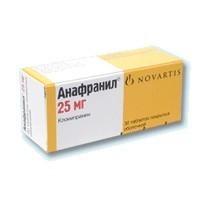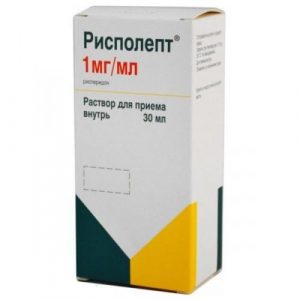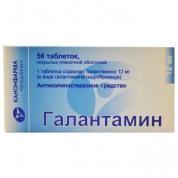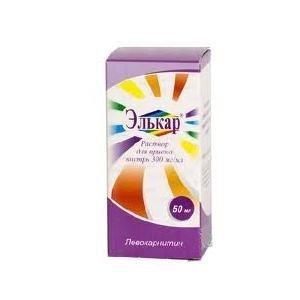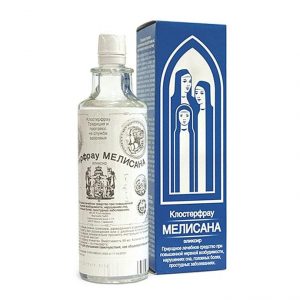Description
Release form
Sugar-coated tablets
Packing
30 pcs.
Pharmacological action of
Anafranil is a tricyclic antidepressant, a reuptake inhibitor of norepinephrine and serotonin. Anafranil acts on the whole depressive syndrome, incl. especially for such typical manifestations as psychomotor retardation, depressed mood and anxiety. The clinical effect is usually observed after 2-3 weeks of treatment. In addition, Anafranil has a specific (different from its antidepressant effect) effect in obsessive-compulsive disorders. The action of Anafranil in chronic pain syndromes, both caused and not caused by somatic diseases, is probably associated with facilitating the transmission of a nerve impulse mediated by serotonin and norepinephrine.
Indications
Depression, obsessive-compulsive syndromes, phobias and obsessive fears, narcolepsy, accompanied by catalepsy, chronic pain syndromes, nocturnal enuresis.
Contraindications
– hypersensitivity to clomipramine and other components of the drug, cross-sensitivity to tricyclic antidepressants from the dibenzazepine
group – simultaneous use of MAO inhibitors, as well as a period of less than 14 days before and after their use
– simultaneous use of selective MAO inhibitors of type A reversible action (such as moclobemide)
– recent myocardial infarction
– congenital QT prolongation syndrome
– pregnancy and lactation.
Pregnancy and lactation
Experience with Anafranil during pregnancy is limited. Since there are separate reports of a possible association between tricyclic antidepressant use and fetal developmental disorders, Anafranil should be avoided during pregnancy, unless the expected maternal treatment effect clearly outweighs the potential risk to the fetus.
In those cases when tricyclic antidepressants were used during pregnancy until the onset of childbirth, newborns developed a withdrawal syndrome during the first few hours or days, manifested by shortness of breath, drowsiness, colic, irritability, arterial hypotension or hypertension, tremor, spastic effects, or seizures. In order to avoid the development of this syndrome, Anafranil should be gradually phased out, if possible, at least 7 weeks before the expected birth.
Since the active substance of the drug is excreted in breast milk, you should either stop breastfeeding or gradually discontinue Anafranil.
Special instructions
During treatment with Anafranil, regular determination of the cellular composition of the blood and liver function indices is necessary.
Composition
1 tablet contains clomipramine hydrochloride 25 mg
Dosage and administration
Doses of the drug are selected individually, taking into account the patient’s condition. The purpose of treatment is to achieve the optimal effect against the background of using the lowest possible doses of the drug, as well as to carefully increase them, especially in elderly patients and adolescents, who are generally more sensitive to Anafranil SR than patients of intermediate age groups. The initial daily dose is 75 mg (25 mg 2-3 r / day)
Side effects
Reactions due to anticholinergic effects (drowsiness, fatigue, tremors, myoclonus, increased appetite, dry mouth, urination disorders, visual disturbances, glaucoma), increased body weight, inadequate response to external stimuli, hallucinations, blood transaminases, gastrointestinal disturbances, activation of symptoms of psychosis, convulsions, ataxia, arrhythmias, hypertension, cardiac conduction disturbances, hepatitis, changes in the number of blood cells, alle argic alveolitis, anaphylactic / anaphylactoid reactions, hyperpyrexia.
Drug Interactions
Anafranil may reduce or completely eliminate the antihypertensive effect of guanethidine, betanidine, reserpine, clonidine, and alpha-methyldopa. Therefore, in cases where the treatment of arterial hypertension is required simultaneously with the use of Anafranil, drugs of other classes (for example, vasodilators or beta-blockers) should be used.
Tricyclic antidepressants, including Anafranil can potentiate the effect of anticholinergics (e.g. phenothiazines, antiparkinsonian drugs, atropine, biperiden, antihistamines) on the organ of vision, central nervous system, intestines and bladder.
Tricyclic antidepressants can enhance the effects of ethanol and other drugs that have a depressing effect on the central nervous system (for example, barbiturates, benzodiazepines or anesthetics).
Anafranil should not be prescribed for at least 2 weeks after discontinuation of MAO inhibitors due to the risk of developing severe symptoms and conditions such as hypertensive crisis, fever, and symptoms of serotonin syndrome: myoclonus, agitation, seizures, delirium and coma. The same rule should be followed if if an MAO inhibitor is prescribed after previous treatment with Anafranil. In any of these cases, the initial doses of Anafranil or MAO inhibitors should be low, they should be increased gradually, under constant monitoring of the effects of the drug.
Existing experience shows that Anafranil can be prescribed no earlier than 24 hours after the withdrawal of MAO inhibitors of type A reversible action (such as moclobemide). But, if an MAO inhibitor of type A is prescribed after the withdrawal of Anafranil, the duration of the break should be at least 2 weeks.
The combined use of Anafranil with selective serotonin reuptake inhibitors can lead to an increased effect on the serotonin system.
With the simultaneous use of Anafranil with selective serotonin reuptake inhibitors or serotonin and norepinephrine reuptake inhibitors (norepinephrine), tricyclic antidepressants and lithium preparations, serotonin syndrome may develop with symptoms such as fever, myoclonus, agitation, agitation.
If it is necessary to prescribe fluoxetine, it is recommended to take a two-three-week break between the use of Anafranil and fluoxetine – end the use of fluoxetine 2-3 weeks before the start of Anafranil therapy or prescribe fluoxetine 2-3 weeks after the end of Anafranil treatment.
Anafranil may enhance the effect on the cardiovascular system of sympathomimetic agents (epinephrine, norepinephrine, isoprenaline, ephedrine and phenylephrine), including and then, when these substances are part of local anesthetics.
Pharmacokinetic interaction
The active substance of the drug Anafranil – clomipramine – is mainly excreted in the form of metabolites. The main metabolic pathway is demethylation to the active metabolite of N-desmethylclomipramine, followed by hydroxylation and conjugation of N-desmethylclomipramine with clomipramine. Several cytochrome P450 isoenzymes are involved in demethylation, mainly CYP3A4, CYP2C19 and CYP1A2. The elimination of both active components is carried out by hydroxylation, which is catalyzed by CYP2D6.
Concomitant use with inhibitors of the CYP2D6 isoenzyme can lead to a three-fold increase in the concentrations of both active components in individuals with the phenotype of the fast debrisoquine / spartein metabolizer. Moreover, in these patients, the metabolism decreases to a level characteristic of individuals with a weak metabolizer phenotype.
It is suggested that co-administration with inhibitors of the isoenzymes CYP1A2, CYP2C19 and CYP3A4 can lead to an increase in the concentration of clomipramine and a decrease in the concentration of N-desmethylclomipramine.
MAO inhibitors (e.g., moclobemide) are contraindicated when taking clomipamine, as in vivo they are potent inhibitors of CYP2D6.
Antiarrhythmic drugs (e.g. quinidine and propafenone) should not be used with tricyclic antidepressants, as they are potent inhibitors of CYP2D6.
Selective serotonin reuptake inhibitors (such as fluoxetine, paroxetine or sertraline) inhibit CYP2D6, other drugs of this group (e.g. fluvoxamine) also inhibit CYP1A2, CYP2C19, which can lead to an increase in the concentration of clomipramine in plasma and the development of the corresponding undesirable effects. A 4-fold increase in the equilibrium concentration of clomipramine was observed when taken together with fluvoxamine (the concentration of N-desmethylclomipramine was reduced by 2 times).
The combined use of antipsychotics (e.g. phenothiazines) can lead to increased plasma concentrations of tricyclic antidepressants, a decrease in the seizure threshold, and seizures. The combination with thioridazine can lead to the development of severe cardiac arrhythmias.
Combined use with the blocker of histamine H2 receptors cimetidine (which is an inhibitor of certain cytochrome P450 isoenzymes, including CYP2D6 and CYP3A4) can lead to increased plasma concentrations of tricyclic antidepressants, in connection with which a reduction in the dose of the latter is required.
There is no data confirming the interaction between Anafranil (at a dose of 25 mg / day) and oral contraceptives (15 or 30 mg of ethinyl estradiol / day) with a constant intake of the latter. There is no evidence that estrogens are inhibitors of CYP2D6, the main isoenzyme involved in the elimination of clomipramine, so there is no reason to expect their interaction. Although the simultaneous use of the tricyclic antidepressant imipramine and estrogen in high doses (50 mg / day) in some cases, it was reported that the side effects were aggravated and the therapeutic effect of the antidepressant was enhanced. It is not known whether these data are significant in relation to the simultaneous use of clomipramine and estrogens in low doses. With the combined use of tricyclic antidepressants and estrogens in high doses (50 mg / day), it is recommended to monitor the therapeutic effect of antidepressants and, if necessary, adjust the dosage regimen.
Methylphenidate may increase the concentration of tricyclic antidepressants, possibly by inhibiting their metabolism. With the combined use of these drugs, it is possible to increase the concentration of tricyclic antidepressants in the blood plasma, and a dose reduction of the latter may be required.
Some tricyclic antidepressants can enhance the anticoagulant effect of coumarins (e.g. warfarin), possibly by inhibiting their metabolism (CYP2C9). There is no evidence to prove the ability of clomipramine to inhibit the metabolism of anticoagulants (warfarin). Nonetheless, when using this class of drugs, plasma concentration of prothrombin is recommended.
Co-administration of Anafranil with drugs inducing cytochrome P450, especially CYP3A4, CYP2C19 and / or CYP1A2, can lead to increased metabolism and reduce the effectiveness of Anafranil.
Co-administration of Anafranil with drugs inducing CYP3A and CYP2C, such as rifampicin or anticonvulsants (such as barbiturates, carbamazepine, phenobarbital and phenytoin), can lead to a decrease in the concentration of clomipramine in plasma.
Known CYP1A2 inducers (e.g. nicotine / other components of cigarette smoke) reduce plasma tricyclic antidepressant concentrations. The equilibrium concentration of clomipramine in cigarette smokers is 2 times lower than that in non-smokers (the concentration of N-desmethylclomipramine did not change).
Clomipramine, both in vivo and in vitro, inhibits the activity of CYP2D6 (Spartein oxidation). Thus, clomipramine can increase the concentration of drugs used simultaneously, metabolized mainly with the participation of CYP2D6, in individuals with a strong metabolizer phenotype.
Overdose
The symptoms that develop with an overdose of Anafranil are similar to those seen with an overdose of other tricyclic antidepressants. The main complications are disorders of the heart and neurological disorders. In children, accidental administration of the drug at any dose inside should be regarded as a very serious and fatal event.
Symptoms usually appear within 4 hours after administration of the drug and reach maximum severity after 24 hours. Due to the slow absorption (anticholinergic action of the drug), prolonged half-life and hepato-enteral recirculation of the active substance, the period of time during which the patient remains is 4-6 days.
From the CNS: drowsiness, stupor, coma, ataxia, anxiety, agitation, intensification of reflexes, rigidity of muscles, choreoatetoid movements, convulsions. In addition, manifestations of serotonin syndrome (fever, myoclonus, delirium, coma) can be observed.
From the cardiovascular system: severe BP, tachycardia, QTc lengthening, arrhythmias (including ventricular pirouette rhythm disturbances), intracardiac conduction abnormalities, shock, heart failure in very rare cases – cardiac arrest.
Other: respiratory depression, cyanosis, vomiting, fever, mydriasis, sweating, oliguria or anuria are possible.
Treatment: There is no specific antidote, the treatment is mostly symptomatic and supportive. If Anafranil is overdosed, especially in children, the patient should be hospitalized and closely monitored for at least 72 hours.
If the patient is conscious, gastric lavage or vomiting should be performed as soon as possible. If the patient is unconscious, intubation of the trachea with the help of a tube with a vomiting cuff should not be caused before aspiration washing to prevent aspiration. These measures are recommended if 12 hours or more have passed since the overdose, since the anticholinergic action of Anafranil may delay gastric emptying. Activated carbon is useful for slowing the absorption of the drug.
Treatment is based on the use of modern methods of intensive care with constant monitoring of heart function, gas composition and blood electrolytes, as well as the use, if necessary, of emergency measures such as anticonvulsant therapy, IVL and resuscitation methods. Since there have been reports that physostigmine can cause marked bradycardia, asystole and convulsions, it is not recommended to use this drug for the treatment of an overdose of Anafranil. Hemodialysis and peritoneal dialysis are not effective because clomipramine concentrations in blood plasma are low.
Storage Conditions
In a dark place at a temperature above 25 ° C.
Shelf life
2 years.
Deystvuyushtee substance
Clomipramine
Terms and conditions
prescription
Dosage PMA
Prescribing
Prescribing
For adults prescribed by a doctor, Children prescribed by a doctor, Children over 5 years old
